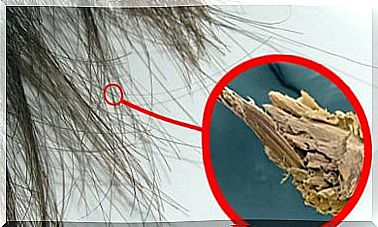There seems to be a connection between nasal catarrh and asthma. In fact, many people experience them almost simultaneously, and the drugs prescribed by doctors work for both conditions because the symptoms are quite similar.
The relationship between nasal catarrh and asthma has long been recognized in the medical field. As a result, it is not uncommon for an asthmatic to experience symptoms of nasal catarrh in the spring, and vice versa.
But why is this connection? For some researchers, it finds its origin in the immune system; for others, it is due to the similar shape of the lining of the breath shared by the bronchi and nose.
What is nasal catarrh?
Nasal catarrh, also known as rhinitis, is inflammation of the lining of the nose. It can react to various etiological factors, but the end result is always an enlargement of the mucous membrane from the accumulation of fluids and inflammatory cells, all of which are due to some external agent or internal stimulus.
There are infectious and non-infectious nasal catarrhs. In the first case, a microorganism penetrates the nose and infects it; this can either be a virus or a bacterium. The body reacts to the colonization and sets mechanisms in motion to drive out the pathogen again. And this in turn leads to inflammation.
The most common non-infectious nasal catarrh is the allergic form, which is more prevalent in asthmatics. The external active ingredient, which is neither a virus nor a bacterium, is a particle that is viewed by the immune system as foreign and thus combated. At certain times of the year, pollen is usually one of the causes.
Nasal catarrh is the inflammation of the lining of the nose. It can be due to viral and bacterial infections, or to non-infectious causes. What is asthma?
Bronchial asthma is inflammation of the bronchial mucosa with hyperreactivity of the bronchi. This means that the airways close suddenly and prevent the normal flow of air beyond the inflammatory process.
This condition is on the list of obstructive and chronic respiratory diseases. It develops over the long term in the form of acute episodes. Colds or infections, which are specific triggers for these episodes, are more common in winter. As a result, this is the time of year when people are most affected.
Doctors usually diagnose asthma at an early age. Affected children experience bronchospasm either when they are physically active or when the temperature drops. For treatment, bronchodilators are first used to assess their development. If the episode repeats, a diagnosis of asthma is usually made.
However, the severity is not always the same and its evolution is not linear. For example, there are people with mild forms of the disease who may only have one attack per year, while others experience an almost persistent state of shortness of breath.
The relationship between a nasal catarrh and asthma
There are many different explanations why people with asthma often have nasal catarrh. It is estimated that up to 75% of them go through an inflammatory phase of the nasal mucosa. Conversely, those diagnosed with nasal catarrh have bronchospasm 40% of the time. Let’s take a closer look at some theories about this connection below.
Climatic conditions and cold air
One of the explanations for why people with nasal catarrh also have asthma is the lack of adequate air flow through their nose. Because the mucous membrane is inflamed, these patients prefer to breathe through their mouths. This is because it prevents the air from being humidified and heated.
So when cold dry air gets into the bronchi, the airway tends to contract as this flow is identified as harmful. Several scientific studies have shown that bronchial constriction increases when it is cold, for example during sports activities in the snow or in winter.
Communication between the mucous membranes
Research in both directions reveals the relationship between all parts of the respiratory mucosa. It is likely that the cells in the bronchi react in some way when a person gets allergens up his nose. Conversely, the nasal mucosa overcompensates when the lower airways contract.
Part of the pathophysiological mechanism lies in nerve communication and in the reactivity of blood vessels. This appears to be the cause of the exertional asthma, which is mediated by the release of adrenaline and noradrenaline, which are released through exercise.
These neurotransmitters create a link between nasal catarrh and asthma by closing the caliber of blood vessels. In the entire respiratory mucosa, this constriction reduces the blood flow and the ability to react to external influences.
Asthma patients are at high risk of developing nasal catarrh. The relationship between the two diseases has several explanations. The immune system and the link between nasal catarrh and asthma
Eosinophils are a special type of white blood cell. They play a special role in mediating whole-body allergic reactions. In fact, researchers are well aware of their role in both nasal catarrh and asthma.
We assume that the mechanisms are similar. Therefore, it makes sense to assume that allergic reactions share the common path of these cells and that their increase is crucial in situations in which they attack external agents.
In addition, the inflammatory substances are not static; instead, they use blood circulation to move around. This is how they can get from the nose to the bronchi.
Nasal catarrh and asthma: similar but different
Finally, we can explain the relationship between nasal catarrh and asthma using different hypotheses, but that does not mean that they are one and the same disease. So, while the drugs used to treat them are similar, the approach is still not the same.
It is important for doctors to be able to distinguish one disease from another so that they can prescribe the right form of therapy. Either way, asthmatics need to learn how to deal with nasal catarrh episodes as they are more likely to be affected.











